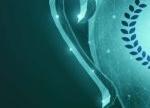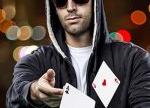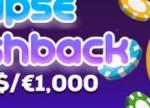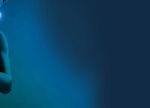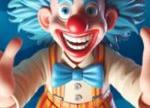The Shooting Small Forward Known as Larry Bird
Posted: June 8, 2015
Updated: October 6, 2017
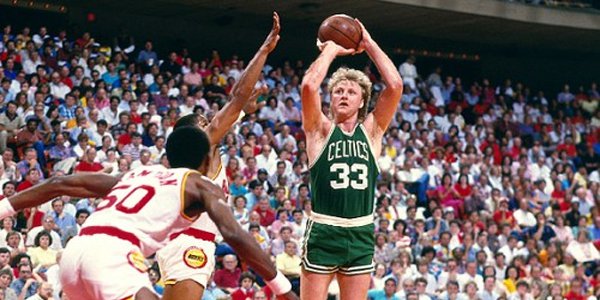
Larry helped to revitalize a league while socially dividing a country.
The National Basketball Association has had a plethora of great shooters. Unlike the feeling of power and authority felt from a slam dunk, a 3-point shooter is something of utmost purity. The ability the make a shot from far off, without the contract and sore travail of working through the paint is in essence non-violent. There exists a peace reminiscent of the teaching of Ghandi, Martin Luther King Jr. or Jesus Christ.
• Bird had a full scholarship as an Indiana Hoosier but left the program
• The media ignited and fueled a rivalry between Bird and Magic Johnson
• In every year of the 1980’s, either Boston or LA was in the final
Larry Joe Bird definitely had the ability to make you feel this way. Unfortunately his star shined during a period where the country was still placing racial barrier wherever they could find them. “The Hick from French Lick” was popular prior to the entrance of Slavic “ubershooters” like petrovic and stajonkovic as well as others notable in U.S. gambling news like Ray Allen and Stephen Curry.
The Origin of Bird’s basketball fundamentals
Larry Bird grew up in the small town of French Lick, Indiana, considered one of the poorest areas in the state. Growing up poor, Bird’s mother worked two jobs to support him and his five brothers and sisters. Bird wasn’t very good in academics and sought refuge in basketball. Basketball was the only thing that Bird had interest in. Although Bird was inseparable from his father, his memories as a Vietnam Vet affected his inability to hold jobs.
Bird averaged 31 points, 21 rebounds and four assists a game. Bird’s obsession paid off in the form of a full scholarship to Indiana University to play for the Hoosiers. Unfortunately, Bird was overwhelmed by the “big university” environment and soon left. A year after Bird’s mother and father divorced, his father committed suicide. While Bird worked painting fencing and doing community tasks, he attended community college where he played for their basketball team.

A year later, Bird went to the less imposing Indiana State University where he blossomed into one of the best players in the nation with an overall average of 30.3 points, 13.3 rebounds and 4.6 assists per game and losing only 13 games in three years. Bird also helped his Sycamores win 33 straight games to reach the NCAA championship finals against Michigan State University. The whole country anticipated the matchup of Larry Bird and Earvin Magic Johnson, considered the most “electric” player in the nation.
The players were very different in the fact that Bird was shy and disliked the limelight whereas Magic was charismatic and loved media attention. Although Bird’s Indiana State lost in what he called the worst performance of his life, he scored 19 points and won the Naismith College Player of the Year Award. The Michigan-Indiana State NCAA Final had the highest viewership rating ever for a college game and it’s not a safe to wager on it changing using online sportbooks in the U.S. or otherwise.
Bird takes his game to the NBA as he remains a pawn by the media
In the NBA draft following the NCAA championship, Bird was sixth draft pick and signed with the Boston Celtics. Instead of going straight to Boston, Bird decided to first play one more year at Indiana State. The following year Magic was the number one NBA draft pick and signed with the Lakers, but Bird’s contract with Boston was for USD 3.25 million.
Receiving the highest contract for a rookie in NBA history at the time angered a lot of people. It especially didn’t sit well with many black Americans who saw Bird as the basketball equivalent of a “Great White Hope” which only further fueled Bird and Magic’s rivalry. Bird’s impact on Boston was immediate, not only with regards to the team finishing first in the Eastern Conference, but with the excitement of fans in the city of Boston.
Bird would receive his first championship with the Celtics in 1981 winning the Finals MVP award. The following year Bird would earn his first All-Defensive Team selection, but lost in the conference finals again to the Philadelphia 76ers. Soon, the matchup so many wanted to see would arrive when Bird and Magic would finally square off in the NBA final. These times would have been as thrilling for any punter as U.S. gambling laws would allow.
Companies like Converse quickly put out ads pitting the two against each other. Bird’s hometown, traditional working man’s ethic gained the support of the establishment. In contrast, Magic’s contemporary “showtime” style had an equal amount of support from people. Their battles represented the past versus the future. Bird and the Celtics beat Magic and the Lakers and won the championship in 1984.
The Lakers would win the next year even though Bird won MVP for his 2nd straight year. In the 1985-1986 season, Bird was the third player in NBA history to win three consecutive MVPs. Instead of the Lakers, The Celtics faced the Houston Rockets winning the finals series for the championship. At the end of the 1987-1988 season Boston fell to LA and the next year Boston lost to the Detroit Pistons.
Bird’s injuries made him fall from the sky
Although they didn’t get to the final, Bird had the best numbers of his career. In every year of the 1980’s, either Boston or LA was in the final. From 1990 onwards, Birds body started to deteriorate even though his statistics were still impressive. In 1990, Bird missed 22 games because spinal injury. The following year Bird missed 37 games which led him to announce his retirement in 1992.

Bird would later earn “Coach of the Year” during his three years time as a coach of the Indiana Pacers and “NBA Executive of the Year” after one year as general manager of the Indiana Pacers. Bird is currently President of the Indiana Pacers.





